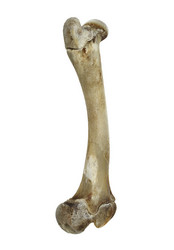3D printing of bone replacements
The amazing combination of properties exhibited by natural bone is largely due to a hierarchical arrangement of soft collagen protein and stiff hydroxyapatite mineral. Despite the important need for improved bone replacement materials, replicating the structure, function and properties of real bone is quite complicated. Doing so with materials that are not toxic to living tissue adds one more challenge to an already difficult task. EU-funded researchers working on the VINDOBONA (Vinyl photopolymer development of bone replacement alternatives) project developed special materials meeting all needs and capable of being shaped by a 3D printer. The team selected photoreactive vinyl carbonates and vinyl esters as the monomers for their exceptionally low cytotoxicity compared to conventional acrylates. Their relatively low reactivity compared to the acrylates was overcome by the addition of thiols. Furthermore, their breakdown products are approved by the U.S. Food and Drug Administration, making them excellent candidates for biomedical applications. VINDOBONA scientists synthesised new vinyl carbonates and vinyl esters. They then tested their reactivity both as homopolymers (consisting only of the vinyl compounds) and when polymerised in a one-step process exploiting their exceptional co-reactivity with alkyl thiols. Cytotoxicity tests using stem cells together with degradation tests on the homopolymers in vitro confirmed their biocompatibility and stability. The vinyl ester-thiol copolymer formulations were optimised for impact resistance and elasticity, and rectangular samples were printed via the 3D printing technology stereolithography. The newly developed 3D printable material exhibited mechanical properties similar to that of natural bone, and new in vivo testing models are expected to follow. Partnerships have been formed with several European small and medium-sized enterprises interested in commercialising the technology, paving the way to improved bone replacements at lower cost for millions of citizens.
Keywords
3D printing, bone, bone replacements, polymer, vinyl, thiols



